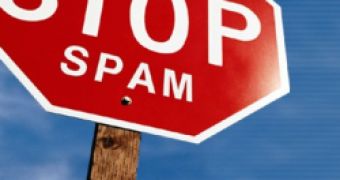Spam has always been extremely disturbing for everyone of us, but November came with an avalanche of unsolicited emails that simply surprised us. Security company Proofpoint today reported that spam continues to represent 90 percent of the total email traffic, which is pretty shocking when we think that most unwanted messages came with infected attachments or malicious links. In addition, the number of the Microsoft Word document spam almost exploded, as it was increased with 64.58 percent in November, representing no less than 4.74 percent of the total spam amount.
The PDF spam grew up with 101.15 percent (!) in November, reaching 1.75 percent of total spam messages. The MP3-based spam was the only one that got decreased, as it currently has only an 'embarrassing' 0.04 percent of total spam.
"Because the mix of different spam types is constantly changing, enterprises need spam protection that automatically adapts to the latest threats", said Rami Habal, director of product marketing for Proofpoint. "Proofpoint's anti-spam solution, powered by Proofpoint MLX machine learning technology, has maintained extremely high effectiveness over the course of 2007, delivering an average of 99.87% effectiveness during the month of November."
But, what's more interesting is that Proofpoint reported that 9 out of 10 email messages sent to enterprises represented unsolicited emails, which underlines the spam's popularity.
Here's how we're going to start another discussion about anti-spam filters and security solutions supposed to block the unsolicited messages coming into our inboxes. There are several technologies available out there, but even so, the spam percentage continues to rise and it may become even more aggressive anytime soon.
2008 may represent a busy year when it comes to security threats, spamming being only one of the popular activities to be conducted in the next 12 months. However, we have to join our forces and report as spam any unsolicited message, as soon as it reaches our inboxes.

 14 DAY TRIAL //
14 DAY TRIAL //